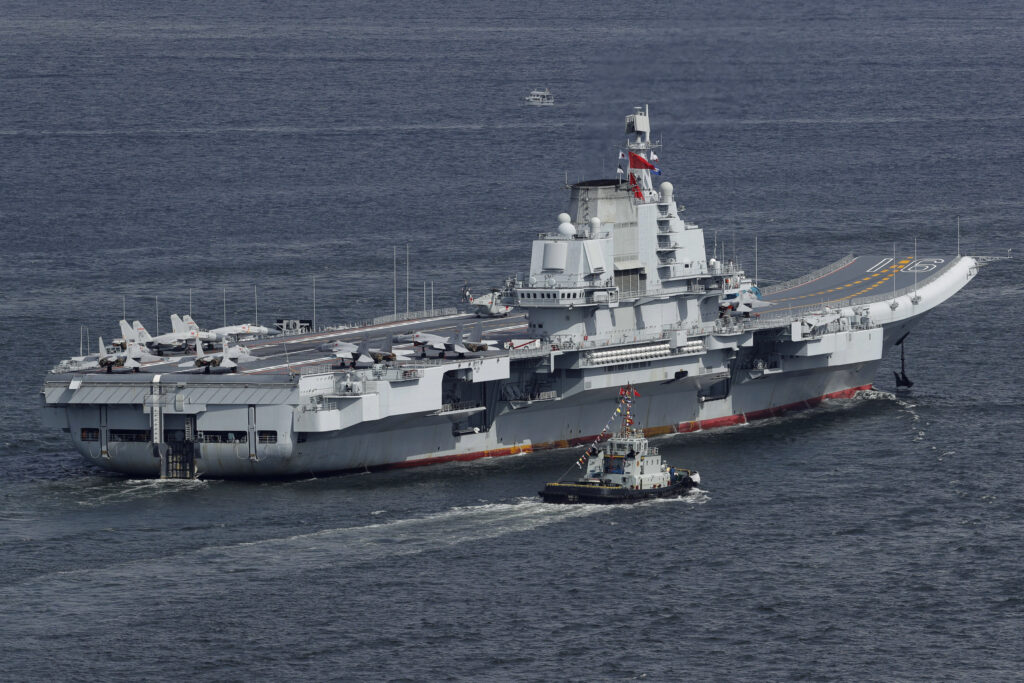A Chinese navy aircraft carrier has breached a second Pacific island defense line that is intended to keep the East Asian power’s forces at a distance.
Newsweek has emailed the Pentagon and the Chinese Defense Ministry for comment.
Why It Matters
The United States has established three island chains across the Pacific Ocean. The first, closest to China, is formed by three U.S. allies and partners—Japan, Taiwan, and the Philippines. The second, centered on Guam—America’s westernmost territory—stretches from Japan to New Guinea, just north of Australia. The last one links Alaska’s Aleutian Islands with New Zealand via Hawaii.
While the U.S. maritime containment strategy aims to restrict China’s naval access to the broader Pacific Ocean during wartime, the Chinese navy—the largest in the world by hull count—has repeatedly breached the First Island Chain as it expands its reach and presence, including a high-profile, long-range mission that circumnavigated Australia earlier this year.
What To Know
The Chinese aircraft carrier CNS Liaoning has been underway since late May, when it was first spotted in the East China Sea, west of the First Island Chain. It then passed through the Miyako Strait in Japan’s southwestern waters and entered the Philippine Sea. It was previously tracked on May 30 while sailing southward in waters east of the Philippines.
A Chinese naval task group—consisting of the Liaoning and three other vessels—was tracked operating about 186 miles southwest of Minamitorishima (with shima meaning “island” in Japanese) on Saturday, the Japanese Defense Ministry said in a press release.
Minamitorishima is Japan’s easternmost territory, located over 1,200 miles southeast of the country’s capital, Tokyo. It has valuable mineral resources, including rare earth elements, according to the Tokyo Metropolitan Government, which administers the remote island.
Japanese media reported that, for the first time ever, Japan’s Defense Ministry had confirmed and announced the presence of a Chinese aircraft carrier in waters near Minamitorishima and on the eastern side of the Second Island Chain. The Liaoning has been operational since 2012.
A map provided by the Defense Ministry shows that the Chinese naval task group was sailing outside Tokyo’s territorial waters—which extend up to 13.8 miles from the coastline—but within its 230-mile-wide exclusive economic zone around the island.
According to the United Nations Convention on the Law of the Sea, all countries enjoy freedom of navigation within an exclusive economic zone, while the coastal state—Japan in this case—holds sovereign rights to explore and exploit natural resources in the area.
The Liaoning was tracked moving southwest on Sunday, away from Minamitorishima, while its fighter jets and helicopters conducted takeoffs and landings, the Japanese Defense Ministry said, adding that the naval task group has expanded to a total of eight vessels.
The Liaoning task group was last detected 600 miles northeast of Guam, a Newsweek map shows.
According to hull numbers provided by Japan’s military, the Liaoning was sailing alongside two Type 055 destroyers, two Type 052D destroyers, one Type 054A frigate, one Type 901 fast combat support ship, and one Type 903A replenishment ship.
What People Are Saying
The Joint Staff of the Japanese Defense Ministry said on Monday, according to the Japanese newspaper Yomiuri Shimbun: “China appears to be trying to improve the operational capabilities of its aircraft carriers and its ability to conduct operations in distant seas and airspace.”
Senior Colonel Zhang Xiaogang, spokesperson for the Chinese Defense Ministry, said on May 29: “[T]he task fleet led by [People’s Liberation Army Navy Ship] Liaoning conducted training in relevant waters, which does not target any specific country or entity and is in line with international law and practice. I think the Japanese side overreacted.”
Mao Ning, spokesperson for the Chinese Foreign Ministry, said on May 28: “What I can tell you is that China’s military vessels’ activities in relevant waters are fully consistent with international law and international practice. We hope Japan will view this from an objective and reasonable perspective.”
What Happens Next
It was not clear whether the Liaoning-led naval task group is on its way back to China. The Chinese Defense Ministry may disclose mission details after the deployment concludes.
Read the full article here
